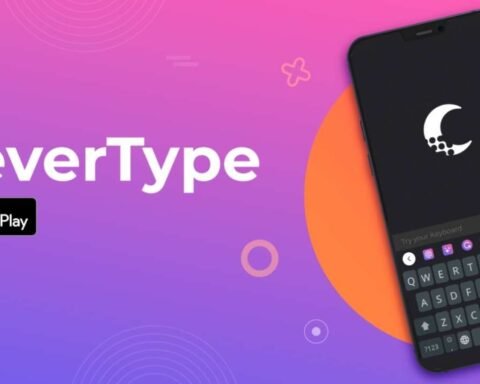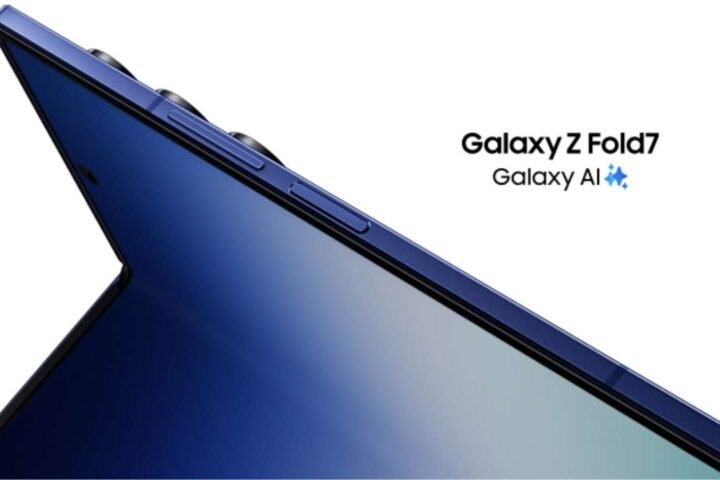Foldable phones, smartwatches, and AI-powered devices are at the forefront of new technology for consumers. The world of consumer technology is changing at an incredible rate. These gadgets are not only changing the way we use technology, but they are also pushing the limits of design, functionality, and how they fit into our daily lives. We’ll look at the most recent changes in these three areas in this article, focusing on the most important ones, the trends, and what they mean for the future.
Foldable Phones: A Future That Is Flexible
Foldable phones have gone from being a niche novelty to a common type of smartphone. Since the Samsung Galaxy Fold came out in 2019, the first commercially viable foldable phone, manufacturers have made a lot of progress in fixing early problems like durability, software optimization, and cost. Foldable phones are now more refined, versatile, and easy to get than ever before.
Improvements in design and durability
One of the most important changes to foldable phones is that the hinge mechanisms and display have become more durable. Samsung has been a leader in the foldable space since the beginning with its Galaxy Z Fold and Z Flip series. The Galaxy Z Fold 7 is said to have a thinner, lighter hinge design that makes the crease less visible on its 7.6-inch inner display. It is expected to come out in mid-2025. This takes care of one of the most common complaints about foldables: the crease that shows up where the screen folds.
Other companies, like Huawei, Oppo, and Vivo, have also made progress. For example, the Huawei Mate X5 has a crease that is almost invisible and an ultra-thin glass display that can handle more than 400,000 folds, which is like using it every day for more than ten years. The Oppo Find N4 has a “Flexion Hinge” that lets it fold in different ways, so users can use it hands-free like a laptop or tent.
Improving Software
Foldable phones have had to pay close attention to software because their unique shapes require custom user experiences. Android 15 and custom manufacturer skins have made it much easier to do more than one thing at a time by 2025. For instance, Samsung’s One UI 7 improves the split-screen feature so that users can run up to four apps at once on the Galaxy Z Fold’s inner display. The Pixel Fold 2 from Google has AI-driven app scaling, which makes sure that apps work well with the foldable screen’s aspect ratio.
Support for third-party apps has also gotten better. For example, Microsoft Office, Adobe Acrobat, and streaming services like Netflix have all made their interfaces better for foldable screens. This makes foldable computers better for work tasks like editing documents or managing spreadsheets while you’re on the go.
Market Expansion and Affordability
Premium flagship phones are no longer the most popular foldable phones. Tecno and Infinix are two brands that have come out with affordable foldables that cost less than $800 and are aimed at new markets. These devices don’t have as many features as their more expensive counterparts, but they work well with MediaTek’s Dimensity chips and have reliable folding displays.
Samsung has also tried to make things more affordable. There are rumors that the Galaxy Z Flip FE (Fan Edition) will cost around $900, which is a lot less than the standard Z Flip’s $1,200 price tag. This push for lower prices is making foldables more appealing to more people.
Future Trends
In the future, foldable phones are likely to have more advanced AI features, like real-time language translation during video calls or AI-driven photography improvements that work with the dual-screen setup. Also, rollable displays, which are screens that extend instead of folding, are on the way. Companies like LG and TCL have shown off prototypes that could change the category by 2026.
Smartwatches: More Than Just Timepieces
Smartwatches have come a long way since they were just fitness trackers. Now they can also monitor your health and let you talk to people. Smartwatches will be smarter, more focused on health, and work better with other systems, especially those that use AI.
New ideas in health and wellness
Health monitoring is still a key part of making smartwatches. The Apple Watch Series 11 came out in late 2024 and changed the way people with diabetes manage their condition by allowing them to check their blood sugar levels without having to cut themselves. This feature uses advanced optical sensors to measure glucose levels through the skin, so you don’t have to use invasive methods. The Galaxy Watch 8 from Samsung also has blood pressure monitoring, which is now FDA-approved in many places, so it is a good tool for managing high blood pressure.
Fitbit, which is owned by Google, has gone above and beyond with the Fitbit Sense 3. It can monitor stress levels through electrodermal activity (EDA) sensors and find sleep apnea. These features meet a growing need for tracking all aspects of health, including mental health as well as physical health.
AI Integration
AI is turning smartwatches into health and productivity assistants that work on their own. For example, the Google Pixel Watch 3 uses Google’s Gemini AI to give you personalized fitness coaching based on real-time data like your heart rate variability and sleep patterns. Users get personalized workout and recovery tips that make their fitness routines better.AI also makes voice assistants on smartwatches better.
Apple’s Siri, which is now powered by Apple Intelligence, can handle complicated tasks on the Watch Series 11, like summarizing notifications or writing quick replies. In the same way, Samsung’s Bixby on the Galaxy Watch 8 can understand natural language, so people can use conversational commands to set reminders or control smart home devices.
Battery Life and Design
Smartwatches have always had trouble with battery life, but things are getting better in 2025. The Huawei Watch GT 5 has a battery life of 14 days because it runs HarmonyOS, which uses less power, and has an AMOLED display that uses less power. Even high-end models like the Apple Watch Ultra 3 can now last up to 48 hours on a single charge, which is a big improvement over older models.
Smartwatches are becoming more customizable when it comes to design. Modular designs, like the ones in the Withings ScanWatch 3, let people change the bezels and straps to fit their style. Also, thinner profiles and bigger screens are becoming more common. For example, the Galaxy Watch 8 has a 1.5-inch AMOLED screen with very few bezels.
Connectivity and Ecosystem Integration
5G connectivity is now standard in high-end smartwatches, which means they can work on their own without a paired smartphone. This is especially helpful for things like streaming music or making calls right from your wrist. Smartwatches are also becoming more and more connected to larger systems. For instance, Apple’s watchOS 12 works perfectly with HomeKit, so users can control smart home devices like lights and thermostats right from their watch.
AI-Powered Devices: The Brain Behind the Tech
AI is changing regular smartphones in addition to foldable ones. The Google Pixel 10, which is expected to come out in 2025, will have Gemini AI built in. This will allow users to point their camera at something to find out what it is or get more information about it. For instance, pointing at a plant could show you how to care for it or tell you what kind of plant it is. The iPhone 17 series from Apple is rumored to come out in September 2025. It will have Apple Intelligence built in, which will make photo editing easier by getting rid of things you don’t want or making pictures look better in low light.AI-powered accessibility features are also becoming more popular. The Galaxy S25 from Samsung has a live transcription feature that uses AI and works in many languages. This makes it easier for people who have trouble hearing to talk to others.
Devices for Smart Homes
Smart home devices that use AI are becoming more proactive. The Amazon Echo Hub 2, which came out in early 2025, uses Alexa’s advanced AI to learn how people use it and do things like change the lights based on the time of day or suggest recipes based on what you have in your pantry. The Nest Hub 3 from Google uses Gemini AI to give personalized answers, like making news briefings that are specific to the user’s interests.AI is also very good at keeping things safe. The Ring Home Security Cam, which was updated in 2025, uses AI to tell the difference between people, pets, and strangers. This cuts down on false alarms and makes your home safer.
Wearables and More
AI is also behind other wearables, like smart glasses and earbuds, in addition to smartwatches. The Meta Ray-Ban Stories 2, which came out in 2024, uses AI to help people who are blind or traveling find their way and recognize objects in real time. Apple’s AirPods Pro 3 also have AI-powered noise cancellation that changes based on the sounds around you in real time, giving you a personalized audio experience.
AI Helpers and Ethics
AI assistants like Grok, which was made by xAI, are getting better at talking to people and understanding what they mean. Grok 3’s voice mode, which is available on iOS and Android apps, lets users have natural, human-like conversations. This makes it a great tool for getting things done and finding information. But as AI becomes a bigger part of everyday life, people are starting to worry about things like data privacy and algorithmic bias. To address user concerns, companies are putting in place clear data policies and AI features that users can choose to use.
The Road Ahead
Foldable phones, smartwatches, and AI-powered devices are all coming together to make the world more connected and smart. Foldable phones are getting stronger and cheaper, smartwatches are turning into all-in-one health and productivity tools, and AI is making devices smarter and easier to use. We can expect devices that are even faster and more responsive as 5G and edge computing continue to improve.
But there are still problems. Foldable phones need to lower their prices even more to compete with regular flagship phones. Smartwatches, on the other hand, need to find a balance between advanced features and battery life. AI-powered devices, on the other hand, have to deal with privacy issues and make sure that everyone can use technology fairly.
In conclusion, the changes to foldable phones, smartwatches, and AI-powered devices are part of a larger trend toward making things more personal, connected, and easy to use. These technologies are always getting better, and they promise to change the way we work, talk to each other, and live. In the future, devices will be more than just tools; they will be smart partners in our daily lives.
























